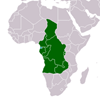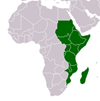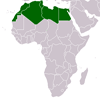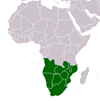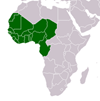Petrogenesis of carbonated meta-ultramafic lenses from the Neoproterozoic Heiani ophiolite, South Eastern Desert, Egypt: A natural analogue to CO2 sequestration
Petrogenesis of carbonated meta-ultramafic lenses from the Neoproterozoic Heiani ophiolite, South Eastern Desert, Egypt: A natural analogue to CO2 sequestration
Among a set of peculiar meta-ultramafics, carbonate-orthopyroxenites are observed for the first time in the Heiani ophiolite belt, South Eastern Desert, Egypt. They form massive lensoidal masses up to 50 m long and 20 m wide. The lenses show a marked structural concordance with their neighboring country rocks. The typical country rocks are represented by the following high-grade metamorphic rocks: kyanite–muscovite schists, amphibolites, kyanite-bearing biotite gneisses, migmatites, granite gneisses and mobilizates. The studied carbonate-orthopyroxenites consist mainly of metamorphic orthopyroxene + magnesite, among other metamorphic, relict primary and retrograde secondary minerals. According to primary chromian spinel (Cr#, 0.7–0.84) chemistry and morphology, absence of clinopyroxene and presence of primary mantle olivine (Fo89–91) as relicts in the metamorphic orthopyroxene, the Heiani carbonate-orthopyroxenites seem to have formed from a highly depleted mantle peridotite precursor. At a late collisional stage during the Pan-Africa terrane accretion and the E–W crustal shortening (ca. 650–620 Ma), high-grade (upper amphibolite facies) low-P/high-T regional metamorphism (ca. 660 Ma) accompanied by CO2-metasomatism resulted in formation of the Heiani carbonate-orthopyroxenites. Mostly the carbonate-bearing shelf sediments beneath and/or in juxtaposition with the Heiani ophiolite are considered to be the proven source of the CO2-rich fluids. Although, a mixed sedimentary-mantle C source is not unlikely. A mineral paragenetic correlation with experimental data for the system MgO–SiO2–H2O–CO2 suggests metamorphic conditions consistent with those of the high-grade country rocks; i.e. 630–650 °C, 6–7 kbar (20–23 km depth) and high-XCO2 (0.6–0.7). The CO2-bearing fluids discharging along faults gave rise to regionally widespread carbonate-bearing assemblages. Accordingly, the Heiani carbonate-orthopyroxenites are considered the by-products of natural carbon sequestration by an ultramafic rock.
CITATION: Gahlan, Hisham A.. Petrogenesis of carbonated meta-ultramafic lenses from the Neoproterozoic Heiani ophiolite, South Eastern Desert, Egypt: A natural analogue to CO2 sequestration . : Elsevier , 2015. Journal of African Earth Sciences, Vol 102, February 2015, pp. 102-115 - Available at: https://library.au.int/frpetrogenesis-carbonated-meta-ultramafic-lenses-neoproterozoic-heiani-ophiolite-south-eastern-deser-4

